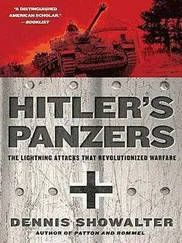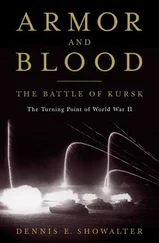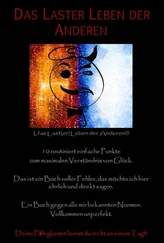32Schlieffen’s 1912 recommendation of amalgamating reserve and active units in the same corps owed less to his faith in reservists than his conviction that active corps were too weak in infantry and reserve corps too weak in artillery to be balanced fighting units. Schlieffen to Freytag-Loringhoven, Aug. 14, 1912, in Generalfeldmarschall Graf Alfred Schlieffen. Briefe, ed. E. Kessel (Göttingen, 1958), 317–318.
33Cf. Eric Leed, No Man’s Land (New York, 1979); Robert Wohl, The Generation of 1914 (Cambridge, Mass., 1979); and Roland N. Stromberg, Redemption by War: The Intellectuals and 1914 (Lawrence, Kans., 1982).
34The Russian army’s problems of professionalism and integration are presented in Dietrich Beyrau, Militär und Gesellschaft im vorrevolutionären Russland (Cologne, 1984), which focusses on the period before 1870; William C. Fuller, Jr., Civil-Military Conflict in Imperial Russia, 1881–1914 (Princeton, N.J., 1985); and Hans-Peter Stein, “Der Offizier des Russischen Heeres im Zeitabschnitt zwischen Reform und Revolution (1861–1905),” Forschungen zur Osteuropäischen Geschichte, N. F, XIII (1967), 346–504.
35The most detailed presentation of Russian war plans remains A. M. Zaionchovski, Plany voiny (Moscow, 1926). This may be supplemented by Pertti Luntinen, French Information on the Russian War Plans 1880–1914 (Helsinki, 1984); and Jack Snyder, The Ideology of the Offensive. Military Decision-Making and the Disasters of 1914 (Ithaca, N.Y., 1984), 157 ff. Peter von Wahlde, “Military Thought in Imperial Russia” (Ph.D. Dissertation, Indiana University, 1966); and Walter T. Wilfong, “Rebuilding the Russian Army, 1905–1914: The Question of a Comprehensive Plan for National Defense” (Ph.D. Dissertation, Indiana University, 1977); incorporate excellent bibliographies. William C. Fuller, Jr., “The Russian Empire,” in Knowing One’s Enemies: Intelligence Assessment Before the Two World Wars, (Princeton, N.J., 1984), 98–126, focuses on intelligence aspects of Russian planning.
36Mikhnevich’s concepts are best expressed in Strategia, 3rd ed. (St. Petersburg, 1911). Their impact is summarized in Jacob W. Kipp, “The Beginning: Imperial Russia and Soviet Mobile Warfare to 1920,” in Historical Analysis of the Use of Mobile Forces by Russia and the USSR, ed. J. W. Kipp et. al. (College Station, Tex., 1985), 50–51.
37Col. Wyndham to Nicolson, May 31, 1909 and Apr. 6, 1910, in British Documents in Foreign Affairs: Reports and Papers from the Foreign Office Confidential Print, Series A, Russia, 1851–1914, ed. D. Lieven, 6 vols. (Washington, D.C., 1983), V, Nr. 78; VI, Nr. 14; Matton to ministry of war, Mar. 1909, in France, Ministére des Affaires Étrangerés, Documents Diplomatiques Français (1871–1914), 41 vols. (Paris, 1929–59), 2nd series, XII, Nr. 88 (hereafter cited as DDF); Pelle to Buirn, Mar. 6 and 24, 1910, ibid., Nrs. 453, 467.
38N. N. Sukhotin, Voina v istorii russkogo mira (St. Petersburg, 1989), 13–14; cit. Richard Pipes, “How to Cope with the Soviet Threat,” Commentary LXXVIII (Aug., 1985, 13).
39“Procès-verbal des entretiens du mois août 1913 entre les chefs d’état-major des armées française et russe,” DDF 3, VIII, Nr. 79. Recent analyses of Russian prewar planning include Bruce Menning’s forthcoming Bayonets before Bullets, Chapter 7; and Jacob W. Kipp, Fromn Foresight to Forecasting: The Russian and Soviet Military Experience (College Station, Tex., 1988), 31 ff.
40D. W. Spring, “Russia and the Franco-Russian Alliance, 1905–1914: Dependence or Interdependence?” Slavonic and East European Review LXVI (1988), 564–592; and the older account by Donald R. Mathieu, “The Role of Russia in French Foreign Policy, 1908–1914” (Ph.D. Dissertation, Stanford University, 1968), highlight the growing importance to France of the Russian connection.
41Jean Savant, Épopée russe. Campagne de l’Armée Rennenkampf en Prusse-Orientale (Paris, 1945), 174; Norman Stone, The Eastern Front, 1914–1917 (New York, 1975), 55–56.
42In the event, the Russians faced no significant hostile action in their rear until policies of repression generated such response. Daniel Graf, “The Reign of the Generals: Military Government in Western Russia, 1914–1915” (Ph.D. Dissertation, University of Nebraska, 1972), passim.
43Yanushkevitch’s Instruction of Aug. 10 to Northwest Front and Zhilinski’s of Aug. 13 to the 1st and 2nd Armies are translated in Edmund Ironside, Tannenberg, 42 ff. See also the summary in Yuri Danilov, Russland im Weltkrieg, tr. R. v. Campenhausen (Jena, 1925), 194 ff. Dean W. Lambert, “The Deterioration of the Imperial Russian Army in the First World War, August 1914-March 1917” (Ph.D. Dissertation, University of Kentucky, 1975), is useful for its pedestrian, common-sense approach to the question of the army’s fighting power.
44For German evaluations of the Russian command see Eggeling to war ministry, Feb. 2, 1914, in PAAA, Russland 72, Nr. 96; and BA-MA, Nachlass Below, N 87/45, 602. Cf. Snyder, Offensive, 179 passim. Savant, Épopée russe, 94 ff., is a laudatory description of Rennenkampf’s prewar career.
45Max Hoffmann, War of Lost Opportunities in War Diaries and Other Papers, 2 vols., M. E. Sutton (London, 1929), II, 40–41; Savant, Épopée russe, 261 ff.
46Maurice Paléologue, An Ambassador’s Memoirs, Vol. I, tr. F. A. Holt (London, 1923), 71.
47For an extreme statement of the balance thesis of staff and command assignments see Stone, Eastern Front, 18 passim; von Wahlde, “Military Thought in Imperial Russia,” 182 ff., offers a more judicious interpretation.
48aJeffrey Brooks, When Russia Learned to Read. Literacy and Popular Literature 1861–1917 (Princeton, N.J., 1985), 18 ff.; John S. Brown, Draftee Division. The 88th Infantry Division in World War II (Lexington, Ky., 1986), 13 ff.
49Cf. N. N. Golovine, The Russian Campaign of 1914, tr. A. G. S. Muntz (Ft. Leavenworth, Kans., 1933), 101 passim; and The Russian Army in the World War (New Haven, Conn., 1931); with most recently Stone, Eastern Front.
50Gempp, “Nachrichtendienst” II, 2, 223.
51Yanushkevich to Zhilinski, Aug. 7 and Aug. 10, 1914, in Sbornik dokumentov mirovqy vqyni na russkom fronte. Manevrenni period 1914 goda: Vostochvo-Prusskaya operasya, ed. Generalny Shtab RKKA (Moscow, 1939), 81, 85–86; and the general accounts in Danilov, Russland, 194–195; Golovine, 1914, 93 ff.; and Savant, Épopée russe, 150–151, 165 ff.
5. TAKING THE MEASURE OF DANGER
1Familiar evaluation of Prittwitz include Max Hoffmann, War of Lost Opportunities, in War Diaries and Other Papers, 2 vols., tr. E. Sutton (London, 1929), I, 21; E. Kabisch, Streitfragen des Weltkrieges 1914–1918 (Stuttgart, 1924), 65; and Walter Elze, Tannenberg. Das Deutsche Heer von 1914 (Breslau, 1928), 93.
2Bundesarchiv-Militärarchiv, Nachlass Below, NL 87/45, 684.
3Hoffmann, War of Lost Opportunities, 22; Walter Goerlitz, Hindenburg: Ein Lebensbild (Bonn, 1953), 55.
4There is a brief survey of his career in Holger Herwig and Neil Heyman, Biographical Dictionary of World War I (Westport, Conn., 1987), 188–189.
5A familiar example from the western front is von Kluck’s negative reaction to the “Hentsch mission.” Alexander von Kluck, The March on Paris and the Battle of the Marne 1914 (London, 1920), 137 ff.
Читать дальше












